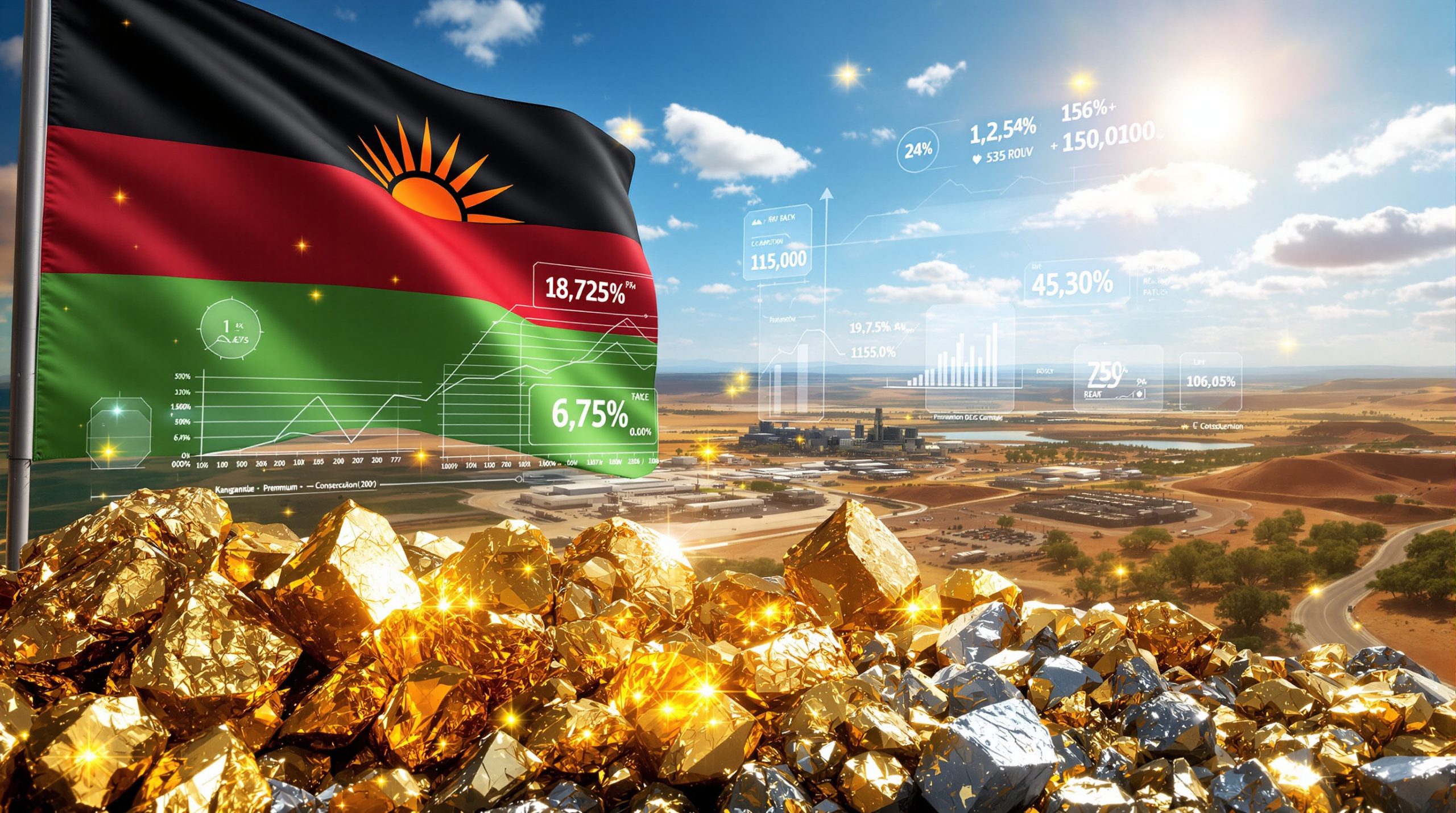What is Deep-Sea Mining and Why is Trump Supporting It?
Deep-sea mining represents a frontier industry focused on extracting valuable mineral deposits from the ocean floor. This process primarily targets polymetallic nodules—potato-sized rocks containing critical minerals essential for modern technology. President Trump's executive order supporting this industry comes as part of a broader strategic initiative to challenge China's dominance in critical mineral shortages supply chains.
The rich deposits found in ocean waters represent an untapped resource of immense potential. According to administration officials, more than 1 billion metric tons of polymetallic nodules are estimated to exist in US waters alone, predominantly near American Samoa and other Pacific territories.
The Strategic Importance of Deep-Sea Mining
These ocean floor nodules contain concentrated deposits of manganese, nickel, copper, cobalt, and rare earth elements—minerals essential for manufacturing electric vehicles, renewable energy technology, and advanced electronics. The administration projects this emerging industry could boost US GDP by approximately $300 billion over the next decade.
Beyond economic benefits, the initiative aims to create roughly 100,000 new American jobs spanning sectors from direct mining operations to processing facilities and supporting industries. This employment boost would primarily benefit coastal communities and technology hubs specializing in marine engineering.
How Does Trump's Executive Order Change the Deep-Sea Mining Landscape?
The executive order represents the most significant policy shift in US seabed mining since the 1980s, fundamentally altering the regulatory landscape for companies seeking to exploit underwater mineral resources.
Key Provisions of the Executive Order
At its core, the order expedites mining permits under the previously underutilized Deep Seabed Hard Minerals Resource Act of 1980. It creates a streamlined, time-bound process for issuing exploration and extraction permits along the US Outer Continental Shelf—the submerged land extending up to 200 nautical miles from American shores.
The directive instructs federal agencies to identify and report on potential high-yield seabed exploration areas within 180 days. It also establishes interagency coordination mechanisms to prevent bureaucratic delays that have historically hindered mineral development.
Furthermore, the order encourages collaboration with allies such as Japan, Australia, and European nations to share resources and technology for operations in international waters. This collaborative approach aims to create a unified bloc of democratic nations to counter China's mineral dominance.
Relationship with International Regulations
Notably, the executive order carefully avoids direct confrontation with the UN-backed International Seabed Authority (ISA). It focuses primarily on mining in US territorial waters rather than contesting governance of international seabeds.
This approach allows the administration to work within existing US legal frameworks rather than through international treaties that might limit American sovereignty. The strategy leverages the fact that the United States has never ratified the United Nations Convention on the Law of the Sea (UNCLOS), providing more flexibility in how it approaches ocean resource development.
Why is Deep-Sea Mining Becoming a Critical Priority?
The timing of this executive order reflects growing concerns about mineral security that extend beyond traditional economic considerations into national security territory.
US-China Competition for Critical Minerals
China currently maintains sweeping control of the critical minerals industry, dominating mining, processing, and refining operations globally. This dominance extends to approximately 60-80% of rare earth element processing and significant portions of nickel, cobalt, and lithium supply chains.
Beijing has recently limited exports of several critical minerals, citing environmental concerns but effectively leveraging its market position to advance geopolitical investor strategies. The executive order explicitly aims to "get ahead of China in this resource space" according to a senior administration official familiar with the policy.
This initiative represents part of broader Trump's market policies to reduce dependency on Chinese mineral supplies, which have been identified as a strategic vulnerability in multiple national security assessments.
Recent US Actions to Boost Domestic Mining
The deep-sea mining order complements other administration moves to reinvigorate American mining capacity. These include the fast-tracking of permitting for 10 mining projects across Western states and the implementation of abbreviated approval processes for mining projects on federal lands.
The administration recently approved one of the country's largest copper mines after decades of regulatory delays. Additionally, officials are considering establishing a sovereign wealth fund specifically designed to invest in US mining operations that advance critical mineral independence.
What Are the Economic and Environmental Implications?
The executive order's implementation will have far-reaching consequences for both the American economy and marine ecosystems.
Potential Economic Benefits
Access to vast mineral resources without reliance on foreign suppliers could significantly strengthen American manufacturing capacity. Early estimates suggest the industry could reduce critical mineral import costs by up to $12 billion annually by 2030.
The development of a new high-tech mining industry would spark innovation in robotics, underwater vehicles, and mining tech innovations. Supporting sectors including maritime services, logistics, and advanced manufacturing would see corresponding growth.
The initiative would reduce American vulnerability to supply chain disruptions and price volatility that have plagued manufacturers dependent on imported minerals. This stability would particularly benefit domestic production of electric vehicles, which require approximately six times more minerals than conventional automobiles.
Moreover, securing domestic mineral supplies would strengthen America's position in manufacturing industries requiring these minerals, potentially reversing decades of offshoring and trade deficits.
Environmental Considerations
The environmental implications of deep-sea mining remain hotly contested. Supporters argue that ocean floor extraction causes significantly less environmental damage than terrestrial mining, which often involves deforestation, acid drainage, and substantial carbon emissions.
Environmental organizations warn that seabed operations could cause irreversible biodiversity loss in unique marine ecosystems that remain largely unexplored. The deep ocean hosts specialized species adapted to extreme conditions, and disrupting these habitats could have cascading ecological effects.
Particular concerns focus on sediment plumes created by mining operations, which could spread for kilometers beyond extraction sites, potentially harming filter-feeding organisms. Additionally, noise pollution from industrial operations might disrupt marine mammals that rely on sound for navigation and communication.
The executive order acknowledges these concerns by requiring environmental assessments, though critics argue these reviews may be expedited to the point of inadequacy. Unresolved questions persist about acceptable levels of environmental impact and appropriate mitigation strategies.
Who Are the Key Players in Deep-Sea Mining?
The executive order has galvanized activity among companies and regulatory bodies positioned to shape this emerging industry.
Companies Positioning for Deep-Sea Mining Opportunities
The most immediate beneficiary appears to be The Metals Company (formerly DeepGreen Metals), whose shares rose approximately 40% following news of the executive order. The company has already conducted pilot mining operations and developed specialized nodule collection technology.
Impossible Metals, another leading contender, recently requested a commercial auction for deposits off American Samoa. The company emphasizes its "sustainable harvesting" approach that claims to minimize seafloor disturbance.
Other notable companies preparing to enter the field include Russia's JSC Yuzhmorgeologiya, Blue Minerals Jamaica, China Minmetals, and Kiribati's Marawa Research and Exploration. Each brings specialized technologies and regional expertise to this developing industry.
Government and Regulatory Bodies
The US Department of the Interior will lead implementation efforts, working through the Bureau of Ocean Energy Management to establish permitting procedures. This represents a significant expansion of the bureau's traditional focus on oil and gas leasing.
Internationally, the International Seabed Authority continues developing standards for mining in international waters, though progress has been slow. The executive order may pressure the ISA to accelerate its rule-making to avoid being sidelined by unilateral national actions.
Various national governments including Japan, South Korea, and Norway are establishing their own regulatory frameworks, creating a complex patchwork of international governance. This fragmentation could either stimulate competition or lead to regulatory arbitrage as companies seek the most favorable jurisdictions.
What's Next for the Deep-Sea Mining Industry?
The executive order marks the beginning rather than the conclusion of America's deep-sea mining journey.
Upcoming Developments to Watch
The implementation timeline for new permitting processes will determine how quickly companies can begin commercial operations. Industry analysts expect the first permits could be issued within 12-18 months, though actual extraction might take several additional years.
International response, particularly from China and nations supporting stricter environmental protocols, will shape the diplomatic landscape. Early indications suggest European allies may follow America's lead with their own expedited permitting systems.
Industry investment patterns will reveal whether private capital believes the regulatory changes provide sufficient certainty for multi-billion dollar commitments. Several venture capital firms have already announced dedicated funds for deep-sea mining technologies.
Environmental impact studies and mitigation strategies will continue evolving as preliminary operations provide real-world data. These findings could either validate the industry's sustainability claims or trigger additional restrictions.
Potential Challenges and Hurdles
Technical challenges of operating at extreme ocean depths remain significant. Most polymetallic nodules lie 4,000-6,000 meters below sea level, requiring specialized equipment that can withstand enormous pressure and operate reliably in corrosive saltwater environments.
Environmental opposition will likely manifest as legal challenges under the Endangered Species Act, Marine Mammal Protection Act, and other environmental statutes. Several NGOs have already announced plans to contest permits through administrative appeals and federal lawsuits.
International diplomatic considerations could complicate operations, particularly if island nations near mining sites raise concerns about potential impacts on their fishing industries or tourism sectors. Securing broad international legitimacy for the American approach will require careful diplomatic engagement.
Market dynamics and mineral price fluctuations will ultimately determine project viability. Cobalt prices, for example, have fallen approximately 80% since their 2022 peak, potentially undermining the economic case for certain operations despite regulatory support.
FAQ About Deep-Sea Mining
What are polymetallic nodules?
Polymetallic nodules are potato-shaped rocks found on the ocean floor that contain high concentrations of manganese, nickel, copper, cobalt, and other critical minerals essential for modern technology. They form over millions of years as dissolved metals in seawater precipitate around a core object like a shark tooth or shell fragment.
How does deep-sea mining differ from traditional mining?
Deep-sea mining extracts minerals from the ocean floor rather than land, requiring specialized equipment and techniques to operate in extreme underwater environments. It typically involves collecting nodules from the seabed surface rather than drilling or tunneling, though the processing methods once minerals reach land remain similar.
What critical minerals are targeted by deep-sea mining?
The primary targets include manganese (used in steel production), nickel and cobalt (essential for batteries), copper (for electrical systems), and various rare earth elements needed for magnets in electric motors, wind turbines, and defense applications. These minerals are collectively essential for transitioning to renewable energy technologies.
How might this executive order affect international relations?
While avoiding direct confrontation with international bodies, the order may create tension with nations that prefer coordinated global approaches to seabed resources. China has already criticized the move as "resource nationalism," while some Pacific Island nations express concern about potential environmental impacts on their fishing grounds. However, allies including Japan and Australia have signaled interest in forming cooperative frameworks under the American model.
For investors interested in this emerging sector, a comprehensive mining investment guide can provide valuable insights into how to position portfolios to benefit from these new developments in the mining industry.
Want to Identify the Next Major Mineral Discovery?
Discovery Alert's proprietary Discovery IQ model instantly notifies investors of significant ASX mineral discoveries, translating complex geological data into actionable investment insights. Explore why historic discoveries can generate exceptional returns by visiting Discovery Alert's dedicated discoveries page and begin your 30-day free trial today to gain a market-leading advantage.




